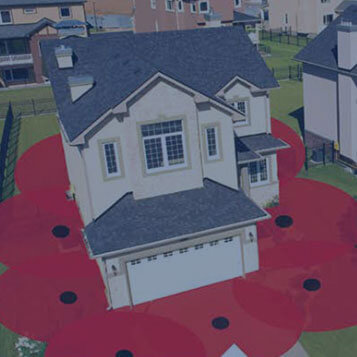Termite Baiting Systems Work and it’s It’s undeniable that termites can wreak major havoc on the infrastructure of any home. Termites chew through wooden beams in your house and leave it structurally unsound, posing a serious risk to the safety of your home and occupants and creating expensive repair work that can stop you from doing what it is you need to do around the house. There are two primary termite control strategies you can implement to ensure your house remains safe, and these vary in their efficacy according to your situation and how bad the problem has become. Exterra has investigated both termite bait barrier systems and in-ground termite bait traps to inform you about best practice when handling your infestation.
Soil Barrier Treatments with Termite Baiting Systems
For many years, the standard approach to controlling subterranean termite infestations was to apply a liquid pesticide under and around the building. This barrier soaked through the soil and prevented termites from entering the property and infesting its wooden components, either by crawling on the ground or under the dirt. If you’re investing in termite soil barrier treatments, try out non-repellant and lethal treatments, these have been shown to be the most effective product in this category. The cons of using termite soil barrier treatments, however, include the fact that it’s intrusive to lay out toxic material on the outskirts of your property, especially if you have young children or pets. Most modern termite barrier systems are less intrusive than previous models, however some homeowners may find their use objectionable.
Termite Bait Traps
With Termite Baiting Systems, a more-recent alternative to termite soil barrier treatments are termite baiting systems that use a totally different approach. Small amounts of edible product (to termites) are deployed in underground stations surrounding your building as a mechanism to wipe out entire colonies. The bait stations are filled with wood-like material infused with a slow-acting chemical agents that termites are attracted to, eat and share with their nest mates. This disperses entire termite colonies as worker termites leave a trail to the poisoned food source and therefore provide access to a lethal cocktail for the entire colony. This type of termite baiting station provides long-term security for your home. Termite stations are usually installed in the Earth, however it’s possible to place them in the pavement too if your problem is particularly serious. Underground termite bait stations are usually most effective when termites are most active, but they may take some time to be found by termites during other seasons, especially in Winter.
Exterra termite baiting systems use this latter method as a means of keeping your home secure from termites. Exterra are the world’s number one termite protection system and have worked effectively across the globe to prevent in-house termite infestations for many years. Exterra are wildlife conservation partners and have donated over $500,000 to The Australian Wildlife Conservancy. Read our blog or contact us for more information – we’re available to discuss our products and schedule an Exterra termite bait trap installation for you today.

